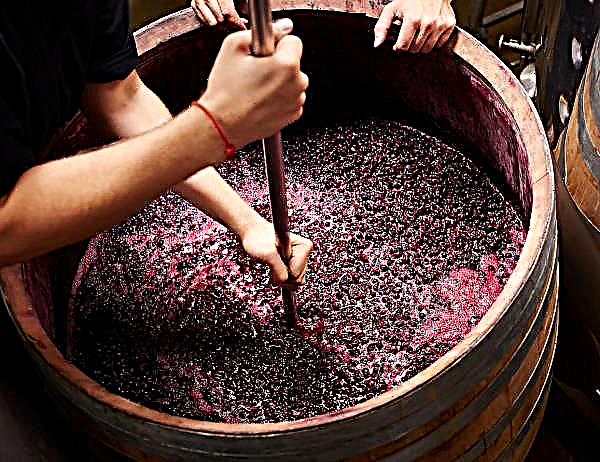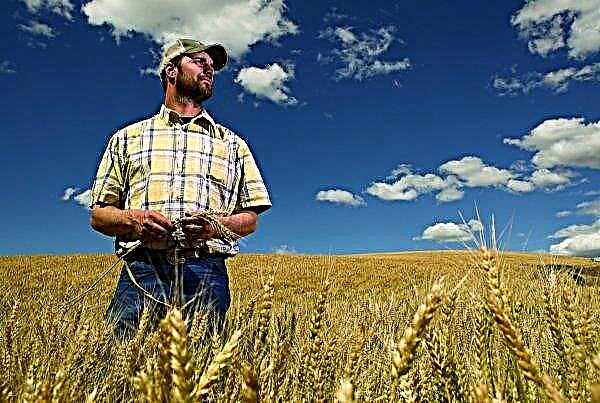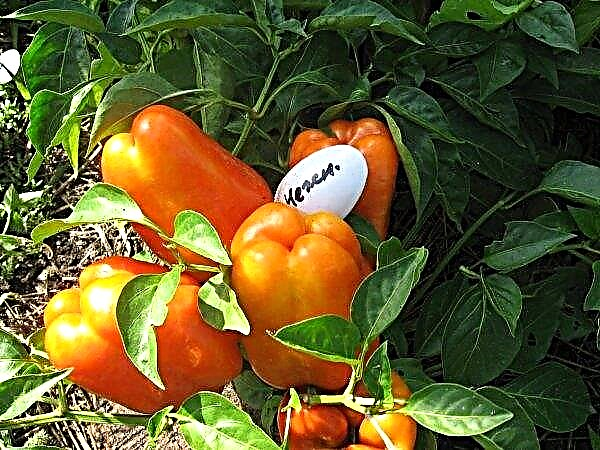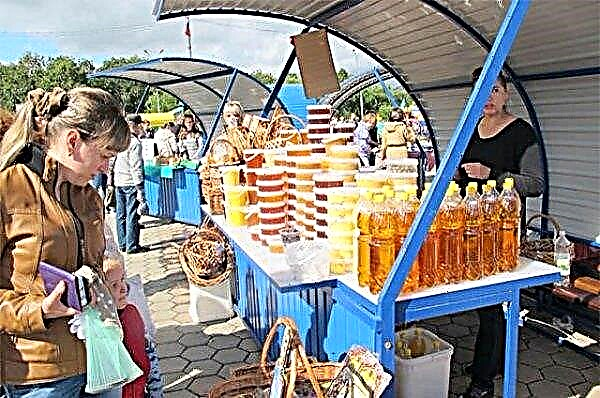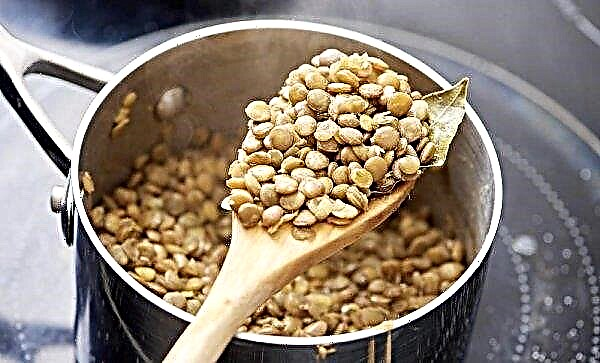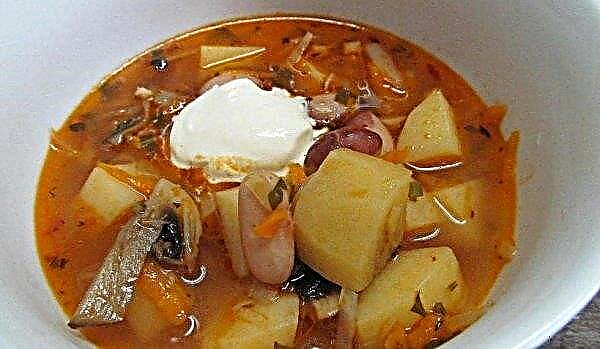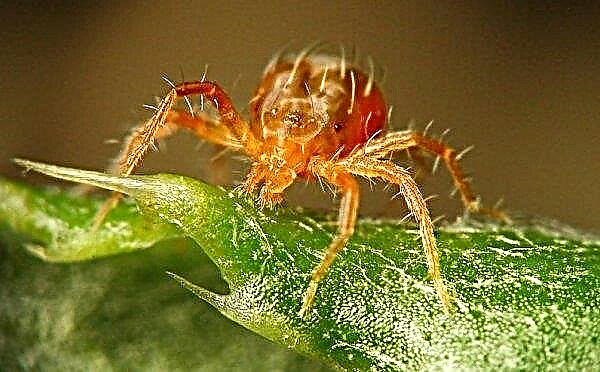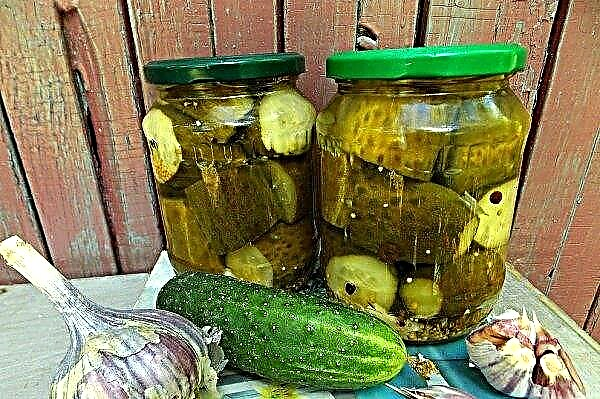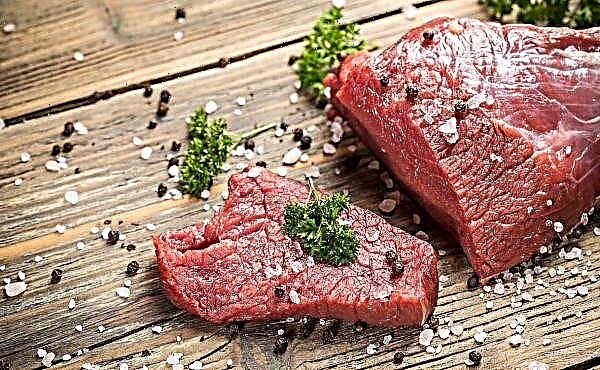Each gardener faced such a problem: carefully choosing the best variety for planting with excellent yield characteristics and buying expensive seeds, it is possible to collect only a few kilograms of vegetables of very dubious quality from a bush in a season. This review outlines the most probable reasons why this happens, as well as all the main secrets that you should know to improve the yield of cucumbers in your own greenhouse or in the garden.
Factors affecting the yield of cucumbers
Cucumber yield is determined by many different factors. All of them can be conditionally divided into two categories - objective, that is, those that the gardener cannot influence and subjective, amenable to adjustment. To plan the results of agricultural activities, it is necessary to know and take into account both factors. The objective circumstances affecting the productivity of cucumbers, in the first place, are their varietal affiliation. However, there is one caveat. Speaking about the yield of a particular variety or hybrid, the manufacturer sometimes calls a parameter calculated for some ideal conditions that cannot be achieved in practice.
The objective circumstances affecting the productivity of cucumbers, in the first place, are their varietal affiliation. However, there is one caveat. Speaking about the yield of a particular variety or hybrid, the manufacturer sometimes calls a parameter calculated for some ideal conditions that cannot be achieved in practice.
There are a lot of subjective factors affecting the yield of cucumbers, they include, in particular:
- initial quality of seed material (proper selection, storage conditions, “age”, etc.);
- seedbed preparation;
- method of planting seeds (seedlings or seedlings);
- growing conditions (in open ground, in a heated or unheated greenhouse);
- compliance with crop rotation rules;
- the use of growth stimulants and other measures aimed at artificially increasing productivity to the detriment of the quality of the fruit;
- compliance with the calendar landing dates;
- the age of the seedlings at the time of planting (the so-called run in growth);
- preservation of the root system when planting seedlings in open ground;
- compliance with planting patterns (distance between plants);
- fertility and optimal soil composition;
- compliance of the climate zone with the requirements of a given variety or hybrid;
- formation of a bush according to the manufacturer's recommendations;
- pinching and rationing of ovaries;
- garter;
- protection against diseases and pests;
- regular fertilizer application;
- proper watering;
- soil care (loosening, weeding, mulching);
- providing sufficient heat and at the same time protection from the scorching midday sun;
- timely harvest.
Did you know? The maximum yield of cucumbers in theory is 360-400 kg per 1 m². In reality, modern European artificial climate chambers make it possible to approach this ideal by no more than 50%, while in ordinary greenhouses, Europeans manage to remove no more than 70 kg of fruit from 1 m², and in the countries of the former CIS - 45 kg. In open ground in private household plots, this figure is even less.
How to increase the yield of cucumbers
There is no single super way to get the maximum yield of cucumbers. To solve this problem, the gardener must try to purposefully influence all subjective factors affecting the fruiting rate. The more literate and comprehensive this impact is, the better the result will be. Below are a few basic rules for growing cucumbers and caring for them, without which you should not rely on high yields.
Seed treatment before sowing
The causative agents of many dangerous diseases of cucumbers, such as, for example, ascochitosis, anthracnose, etc., are successfully reserved in the seeds. To destroy the pathogen, the seeds must be decontaminated before planting. At home, this is usually done by soaking the seeds in a solution of potassium permanganate, hydrogen peroxide, aloe juice and other disinfectant formulations. Nevertheless, it must be understood that such procedures are not an absolute guarantee that all potential threats remaining in the seeds will be neutralized.
So, for example, the cucumber mosaic virus - a disease from which there is no effective treatment - can not be destroyed by heating or ordinary pickling. The viability of this pathogen is such that it requires conditions that are more aggressive than those that can withstand the seeds themselves, in other words, under normal conditions, the virus can only be killed with a cucumber germ.
Important! The viability of the cucumber mosaic virus is significantly reduced by the third year of storage of cucumber seeds, while their germination by this time reaches its highest rate. Therefore, when using seeds of their own crop for planting, it is recommended to sustain them for 2-3 years after harvest.
For this reason, a much more reliable way of disinfecting seeds is to conduct these activities in specialized laboratories. Well-known and respected European producers pre-sow seeds before they are sold, which is why the seeds of Dutch or German hybrids can and should be planted without first soaking, germinating and decontaminating them. Such sowing material is not cheap, however, for the use of small lots in your own personal plots, such costs are justified.
Mulching beds
In addition to seeds, weeds are a very common source of infection of cucumbers with fungal, bacterial, and viral diseases, and on some of them (for example, throat or plantain), fungal spores can persist for a very long time. In addition to pathogenic microorganisms, weed grass is often the site of wintering and subsequent development of larvae of various pests. Finally, sprouting abundantly in the beds, weeds begin to compete with crops for solar energy and nutrients in the soil, and in this struggle, wild grass is usually stronger.
Did you know? In Japan, a hybrid was bred with fruits no more than 1 cm in length. Such cucumbers are very much appreciated in local restaurants, because when preparing sushi they can not be cut, but put in a whole dish.
The three reasons listed above provide an answer to the question of why it is so important to conduct a constant and thorough weed control. However, even regular weeding does not completely solve the problem of weeds. On an industrial scale, special pesticides - herbicides are used for these purposes, however, this method of destruction of weed grass adversely affects the environmental situation as a whole and makes eating the resulting crop unsafe.
In small garden plots, weeds are easier to control with mulching. Covering the beds with a thick layer of organic material (peat, straw, sawdust, conifer needles, etc.) blocks the growth of weed grass and, in addition, traps moisture in the soil, prevents its evaporation through cracks that appear when the earth dries after irrigation or the rain. An additional advantage of mulching is the fact that during the process of decaying, organic residues enrich the soil with humus and significantly increase its fertility.
Hilling cucumbers
There is no consensus regarding the need to cultivate cucumbers among gardeners. Many people think that such an event is unnecessary.
Meanwhile, the formation of an earthen mound around the trunk of the plant allows us to solve several problems at once, namely:
- contributes to the formation of additional root processes, which significantly strengthens not only the root, but the whole bush as a whole;
- allows you to retain moisture around the bush, and not at its base, which protects the plant from root rot;
- accelerates the process of assimilation by the bush of nutrients in the soil;
- enriches the soil layer with oxygen, prevents its cracking and drying out;
- protects immature roots and stem from spring cooling.
Important! In order to spud the bush was easier, cucumbers recommend to plant in a deep hole. And if you put a pillow of nettles on the bottom of such a hole, the plant will simultaneously receive organic top dressing, natural warming, and additional protection against pests.
The root system of cucumbers lies quite close to the surface, therefore, in order to avoid damage to the roots, the hilling of the bush should be carried out from a distance of at least 60 cm from the base of the plant. If during planting a denser thickening of the beds was used, it is better to form a hill around the bush at the expense of alluvial soil or use humus for these purposes. It is recommended to hush up a cucumber bush to a height of 10–20 cm. Such a procedure is carried out immediately after transplanting seedlings into open ground, and when using a seedling-free growing method, 3-4 real leaves are formed in the sprouts.
Proper watering
Cucumbers need abundant watering, but it is in this part that novice gardeners make the largest number of mistakes.
In order for the bushes to be healthy and bear fruit well, they need to be watered:
- warm water (preferably several degrees higher than air temperature);
- not on the leaves and not under the root, but on a circle with a radius of 10-15 cm around the bush (drops on the leaves, especially on a sunny day, contribute to severe burns, and a stream directed to the base of the bush damages the delicate root system of the cucumber);
- the lower the lower the ambient temperature;
- preventing waterlogging of the soil on the bed;
- less abundant (1-2 l of water per bush) during the period of gaining green mass and more abundant (3-4 l of water per bush) during the period of active fruiting.
Important! A drip irrigation tape should be laid on top of the mulch layer, this technique helps to create an optimal moisture regime in the lower part of the bush and accelerates the process of converting a vegetable shelter into an organic fertilizer.
It is advisable to organize a drip irrigation system on a cucumber bed. It allows you to significantly save water consumption, prevents erosion of roots or liquid on the leaves and allows you to water the garden even on a bright sunny day, which in the case of ordinary watering is strictly unacceptable. Very good helps to increase the yield of cucumbers periodic watering with milk.
This product contains a lot of potassium, which plays a paramount role in the process of fruit formation. In addition, milk bacteria, getting into the ground, neutralize its acidity and contribute to the development of beneficial soil microflora, which, in turn, helps the plant absorb the main nutrients. To water cucumbers, whole milk must be diluted with water in a ratio of 1:10.
Fertilizer application
In order for a high-yielding variety or hybrid of cucumbers to demonstrate its full potential, it is not enough to plant a bush in fertile soil. In the process of active fruiting, the crop needs a very large amount of nutrients, so the land in the garden is very depleted. To maintain a constant yield indicator, cucumbers should be fed at least 4-5 times during the season, using both organic and mineral fertilizers.
When applying fertilizer, it is recommended to use the following scheme:
| Application Time | Organic component | Mineral component |
| 10 days after planting in open ground | manure or chicken droppings (diluted with water in the ratio, respectively, 1: 8 or 1:15) | 1 tbsp. l carbamide + 60 g superphosphate per 10 l of water |
| Bookmark flower buds | 1 tbsp. chopped wood ash per 10 l of water | 30 g of ammonium nitrate + 40 g of superphosphate + 20 g of potassium nitrate per 10 l of water. To stimulate flowering at this stage, you can spray the bush with a solution of 0.25 parts of boric acid and 0.1 parts of potassium permanganate |
| Beginning of fruiting | 2 tbsp. Humate per 10 liters of water | 2 tbsp. potassium nitrate per 10 liters of water |
| The second wave of fruiting | Fresh organic layer mulch renewal | 1 tbsp. baking soda per 10 liters of water |
When applying fertilizers, the following rules should be considered:
- Top dressing, like watering, should be carried out in the morning or evening, trying not to damage the root system and not burn the leaves.
- The higher yielding variety of cucumbers, the more fertilizing the plant needs.
- At the beginning of the growing season, mineral fertilizers must include a nitrogen, potash and phosphorus component, but at the fruiting stage, nitrogen fertilizers must be reduced in order to redirect bush forces from building green mass to fruit formation; however, the bush also needs small quantities of nitrogen in the middle of the season, because it helps to replace yellowed and withered leaves, and the leaves, as the main source of chlorophyll, are necessary for the plant for the normal process of photosynthesis.
Timely stepson
The absence of fruiting is often explained by the presence on the bush of extra processes (lashes), which take away excess forces from the bush and at the same time do not give a crop. In most varieties and hybrids of cucumbers, it is recommended to remove all lateral shoots that appear in the internodes at the level of up to the sixth leaf above the ground. In addition, at a height of 3-4 leaves, it is also necessary to remove all the ovaries. It is best to carry out the procedure with your hands, carefully pushing the sheet and pinching the extra shoot. It is optimal to do this when the shoot grows up to 3-4 cm: too small stepsons are poorly visible and, pinching them, it is easy to damage the main stem or leaf, while in the later stages the excess green mass already manages to negatively affect yield, in addition , separation of a thick shoot to a plant is much more difficult to transfer. After removing the stepson, the wound site should be squeezed with two fingers to reduce the secretion of juice and minimize the risk of infection of the plant.
It is optimal to do this when the shoot grows up to 3-4 cm: too small stepsons are poorly visible and, pinching them, it is easy to damage the main stem or leaf, while in the later stages the excess green mass already manages to negatively affect yield, in addition , separation of a thick shoot to a plant is much more difficult to transfer. After removing the stepson, the wound site should be squeezed with two fingers to reduce the secretion of juice and minimize the risk of infection of the plant.
Important! It is estimated that untimely removal of stepchildren leads to an average loss of 2–4 kg of cucumbers from each bush.
Regular harvest
Many beginner gardeners try to collect cucumbers at the moment when they reach their maximum size, believing that in this way they get a larger crop. However, in reality the situation is just the opposite. With abundant fruiting, a large number of green leaves, simultaneously ripening on the bush, create a serious burden for the plant. For any variety or hybrid, there are standards for the number of greenery, which is recommended to leave to ripen on the bush. This parameter must be known and try to comply.
Additional crop recommendations
As was said, the yield of cucumbers largely depends on where they are grown - in a greenhouse or in open ground. For each of these methods, there are agro-technical nuances and secrets that allow you to affect the volume of fruiting.
Important! Each cucumber taken stimulates the formation of new fruits and accelerates this process.
In the greenhouse
Traditionally, cucumbers bear fruit better in the greenhouse than in the open ground, since a constant microclimate is very important for this crop.
However, with this method of cultivation, it is necessary to pay special attention to such problems that can adversely affect fruiting:
- Pollination. Pantocarpic varieties of cucumbers are best suited for growing in greenhouses (the word "parthenos" in Greek means "virgin").In such hybrids, all flowers are female, and fertilization is carried out without pollination. When planting ordinary or even self-pollinated varieties in a greenhouse, in the absence of the main pollinators - wind and insects - sometimes it is necessary to resort to the artificial pollination procedure.
- Fungal infections. It is greenhouse crops that often suffer from such diseases, since the combination of high humidity and a constant high temperature contributes to the development of pathogenic fungi. In order to prevent diseases, it is necessary to regularly ventilate the greenhouse, as well as treat the beds with environmentally friendly fungicidal preparations.
- Carbon dioxide deficiency. Due to the limited air circulation in greenhouses, this problem arises quite often, since cucumber bushes absorb very large amounts of hydrogen dioxide during photosynthesis. It can be filled in several ways, for example, by mulching the beds with compost or manure, emitting carbon dioxide during fermentation, installing an oxygen-absorbing burner in the greenhouse, or laying pieces of dry ice along the tracks.
 To increase the yield of cucumbers in greenhouses, an agrotechnical technique called “smoke” is also used. Its essence lies in the fact that at the stage of laying flower buds in the greenhouse, a stove is placed, which they begin to heat with firewood, limiting as much as possible oxygen access to the fire. As a result, the wood begins to be consumed, releasing carbon monoxide, which, as it turns out, contributes to the laying of female flowers and, accordingly, leads to an increase in the number of ovaries.
To increase the yield of cucumbers in greenhouses, an agrotechnical technique called “smoke” is also used. Its essence lies in the fact that at the stage of laying flower buds in the greenhouse, a stove is placed, which they begin to heat with firewood, limiting as much as possible oxygen access to the fire. As a result, the wood begins to be consumed, releasing carbon monoxide, which, as it turns out, contributes to the laying of female flowers and, accordingly, leads to an increase in the number of ovaries.It should also be borne in mind that ordinary plastic film is not able to protect delicate cucumber seedlings from spring frosts. Temperature + 13 ° С for a cucumber is critical. Therefore, this vegetable can be planted in unheated greenhouses almost at the same time as in open ground, and if you want to get an early harvest in a greenhouse, you need to provide a heating mode.
Did you know? The Czech language, although it belongs to the Slavic group, contains many words, the Russian translation of which is very unexpected and even quite comical. For example, cucumbers in Czech - butts ("okurky").
The maximum fruiting of cucumbers in the greenhouse is provided by modern automated systems that allow you to adjust the temperature, refreshment, humidity and air circulation. These parameters are interdependent, for example, at maximum illumination, the optimum temperature for cucumbers is in the range + 25 ... + 30 ° С, but if there is not enough light, the air should also be cooler by at least 5 degrees, etc.
In the open ground
Cucumbers growing in open ground are less likely to suffer from fungal infections, but are largely susceptible to sunburn. For a good harvest, all pumpkin crops need good lighting, however, direct sunlight for delicate cucumber leaves is very dangerous. Therefore, the cucumber bed should be placed so that the sun illuminates it in the morning and evening. If this is not possible, the bushes must be shaded with the help of modern sun screens. Another important point that must be considered when arranging an open cucumber bed is suitable neighbors. Finally, to increase productivity, it is recommended to tie cucumbers to a trellis. There is, however, an alternative method of growing vegetables, when the lashes are horizontally laid out on the ground, however, the contact of leaves and fruits with the soil prevents uniform illumination of the bush, complicates proper watering and increases the risk of infection by diseases and pests. In addition, the vertical garter can significantly save space by planting more bushes on the bed and, accordingly, get a higher yield as a result.
Finally, to increase productivity, it is recommended to tie cucumbers to a trellis. There is, however, an alternative method of growing vegetables, when the lashes are horizontally laid out on the ground, however, the contact of leaves and fruits with the soil prevents uniform illumination of the bush, complicates proper watering and increases the risk of infection by diseases and pests. In addition, the vertical garter can significantly save space by planting more bushes on the bed and, accordingly, get a higher yield as a result.
Important! Cucumbers grow very well in the immediate vicinity with legumes, radishes and lettuce, but the proximity of herbs and potatoes is highly undesirable.
To summarize. You can get the maximum yield of cucumbers in the garden or in the greenhouse without the use of growth stimulants and other technologies that are doubtful from the point of view of environmental friendliness and safety. To do this, create the conditions for the culture that are most suitable for it and help it to direct all its forces to abundant fruiting, without being “distracted” by solving extraneous tasks such as combating adverse microclimate, diseases, pests, maintaining excess green mass, etc. n. Breeders by creating hardy and high-yielding varieties and hybrids can help farmers in solving this problem, but each gardener must use this potential independently.


